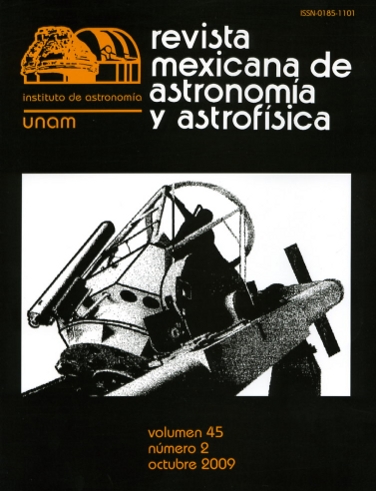Optical Quantum Entanglement in Astrophysics
Main Article Content
Abstract
The theories of quantum entanglement between two distant particles, which clearly conrm the non-local nature of Quantum Mechanics, are applied to naturally produced particles in astrophysical objects. We study the production and reception of the cases of optical quantum entanglement most feasible to be observed: the twophoton spontaneous transition of the hydrogen 2 2S1=2 metastable level, which is known to be one of the components of the continuous spectra of ionized regions. We obtain the two-photon emission rate for four astrophysical objects: the Orion Nebula, two nearby planetary nebulae IC 2149 and NGC 7293, and the solar corona. The production of entangled pairs per second is 5:80×1048, 9:39×1045, 9:77×1044, and 1:46×1016 respectively. The distribution of the propagation directions of both emitted photons does not vanish at any angle; therefore it is possible to observe the entangled pair at angles ø ≈ 0º. Because the number of two-photon coincidences goes as the fourth power of the ratio between the detector size and the distance from the astrophysical object, coincidences are scarce; for its detection we require receivers much larger than those currently available.
Article Details
How to Cite
Gómez, J., Peimbert, A., & Echevarría, J. (2010). Optical Quantum Entanglement in Astrophysics. Revista Mexicana De Astronomía Y Astrofísica, 45(2). Retrieved from https://www.revistas.unam.mx/index.php/revmexaa/article/view/20602
